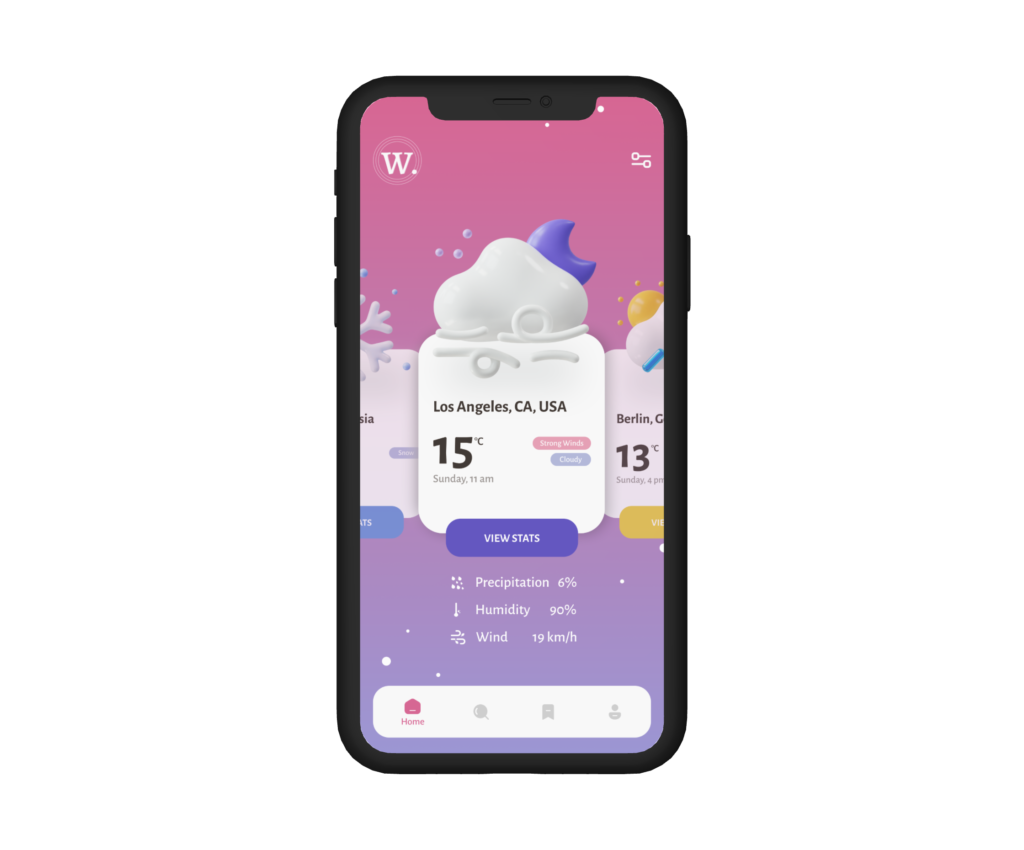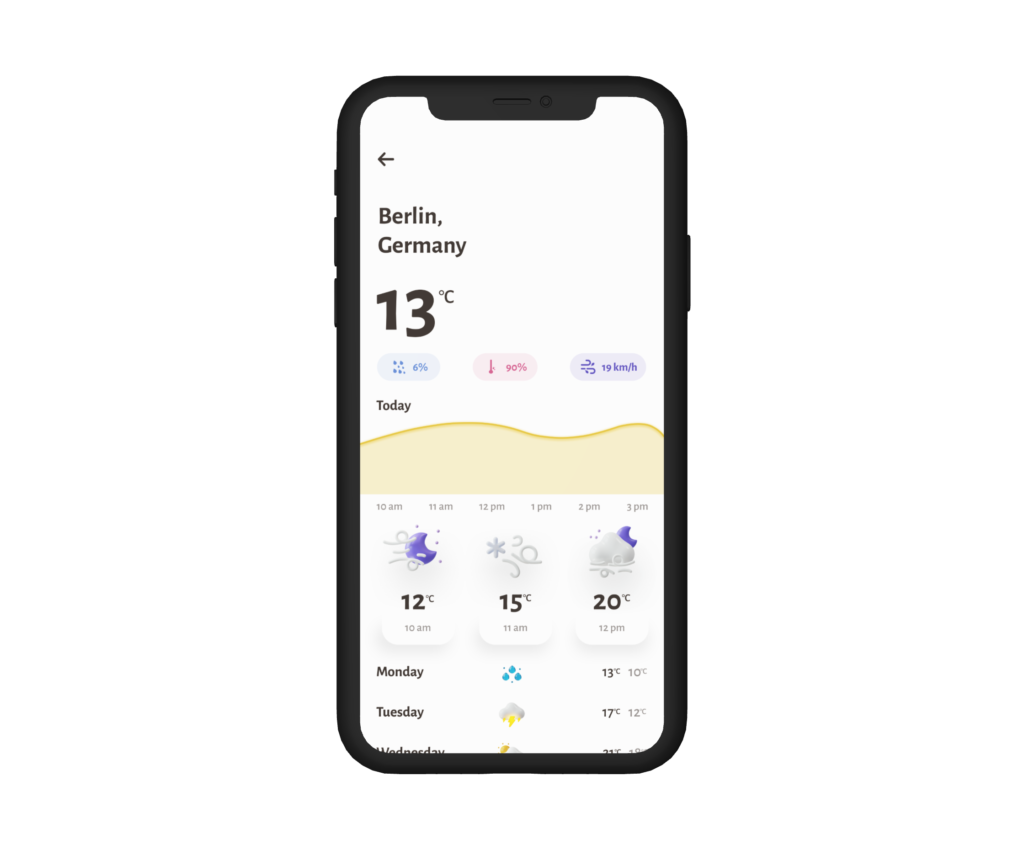What We Provide In Weather App
Weather is an omnipresent force in our lives, influencing our daily routines, travel plans, and outdoor activities. Understanding the weather conditions is not just a matter of convenience; it’s a necessity for staying safe and making informed decisions. In the digital age, weather apps have emerged as essential tools that put meteorological information right at our fingertips. These versatile applications offer up-to-the-minute forecasts, real-time weather data, and a wealth of meteorological insights, transforming the way we interact with the skies above.

Features of Weather Apps
Weather apps come equipped with a wide array of features that enhance user experience and provide comprehensive weather information:
- Current Conditions: Display real-time weather data, including temperature, humidity, wind speed, and atmospheric pressure, giving users an instant snapshot of the weather.
- Hourly Forecasts: Provide hour-by-hour weather predictions for the day, enabling users to plan their activities accordingly and stay prepared.
- Daily Forecasts: Offer multi-day weather forecasts, including high and low temperatures, precipitation chances, and sunrise/sunset times, allowing users to plan their week.
- Interactive Radar Maps: Include interactive radar maps that enable users to track precipitation, storms, and weather patterns in real-time, helping them make informed decisions.
- Severe Weather Alerts: Integrate a robust alert system that notifies users of severe weather conditions in their area, ensuring their safety during storms or other emergencies.
- Weather Widgets: Create customizable weather widgets that users can place on their device’s home screen for quick access to weather information.
- Location-Based Forecasting: Utilize geolocation services to automatically detect the user’s location and provide localized weather information without manual input.
- Weather History: Allow users to access historical weather data, including past temperature and precipitation records, for reference and analysis.
Benefits of Weather Apps
Weather apps offer a plethora of benefits that have made them indispensable in our daily lives. Here are some of the key advantages:
- Accurate Forecasts: Weather apps provide precise and reliable weather forecasts, helping users plan their activities with confidence.
- Real-Time Data: Users can access real-time weather data, including temperature, humidity, wind speed, and precipitation, allowing them to stay informed about current conditions.
- Location-Based: Weather apps deliver location-specific forecasts, ensuring that users receive weather information tailored to their exact location.
- Severe Weather Alerts: These apps send timely alerts for severe weather conditions, such as thunderstorms, hurricanes, or extreme temperatures, keeping users safe and prepared.
- Travel Planning: Travelers benefit from weather apps by checking weather conditions at their destination before embarking on a trip.
- Outdoor Activities: Individuals engaging in outdoor activities, from hiking to sports, rely on weather apps to make informed decisions about their plans.
- Agriculture and Farming: Farmers use weather apps to monitor weather patterns for crop management and livestock care.
Key Features for a Successful Weather App Development
Creating a successful weather app requires a focus on key features that enhance user experience and provide accurate weather information:
- Accurate Forecasts: Partner with reliable weather data providers to ensure accurate and up-to-date forecasts that users can trust.
- Real-Time Data: Implement features to display real-time weather data, including temperature, humidity, wind speed, and precipitation.
- Location-Based Forecasting: Utilize geolocation services to automatically detect the user’s location and provide localized weather information.
- Severe Weather Alerts: Integrate a robust alert system that notifies users of severe weather conditions in their area, ensuring their safety during storms or other emergencies.
- Interactive Maps: Include interactive radar maps and satellite imagery to allow users to track weather patterns, storms, and precipitation in real-time.
- Customization: Offer user customization options, such as preferred units (Fahrenheit or Celsius), notification preferences, and weather widget customization.
- Widgets: Create customizable weather widgets that users can place on their device’s home screen for quick access to weather information.

Functionalities of Weather Apps
A successful weather app should encompass a range of functionalities to provide accurate and valuable weather information:
- Current Conditions: Display real-time weather data, including temperature, humidity, wind speed, and atmospheric pressure, giving users an instant snapshot of the weather.
- Hourly Forecasts: Provide hour-by-hour weather predictions for the day, enabling users to plan their activities accordingly and stay prepared.
- Daily Forecasts: Offer multi-day weather forecasts, including high and low temperatures, precipitation chances, and sunrise/sunset times, allowing users to plan their week.
- Interactive Radar Maps: Include interactive radar maps that enable users to track precipitation, storms, and weather patterns in real-time, helping them make informed decisions.
- Severe Weather Alerts: Integrate a robust alert system that notifies users of severe weather conditions in their area, ensuring their safety during storms or other emergencies.
- Weather Widgets: Create customizable weather widgets that users can place on their device’s home screen for quick access to weather information.
- Location-Based Forecasting: Utilize geolocation services to automatically detect the user’s location and provide localized weather information without manual input.
- Weather History: Allow users to access historical weather data, including past temperature and precipitation records, for reference and analysis.
Technologies, Time Frame, and Cost
Developing a weather app involves several considerations, including the choice of technologies, time frame, and costs:
- Technologies: Depending on the platform (iOS, Android, or both), technologies like Swift, Kotlin, React Native, or Flutter may be used for frontend development. Backend technologies like Node.js, Ruby on Rails, or Django can be chosen for data retrieval and storage.
- Development Time Frame: A basic weather app can take approximately 2-4 months to develop, while a more feature-rich app may require 4-6 months or longer.
- Cost Range: Development costs can vary based on complexity and features. Basic apps may start at $30,000 – $50,000, while medium complexity apps can range from $50,000 – $100,000, and complex apps may exceed $100,000 in development costs.
